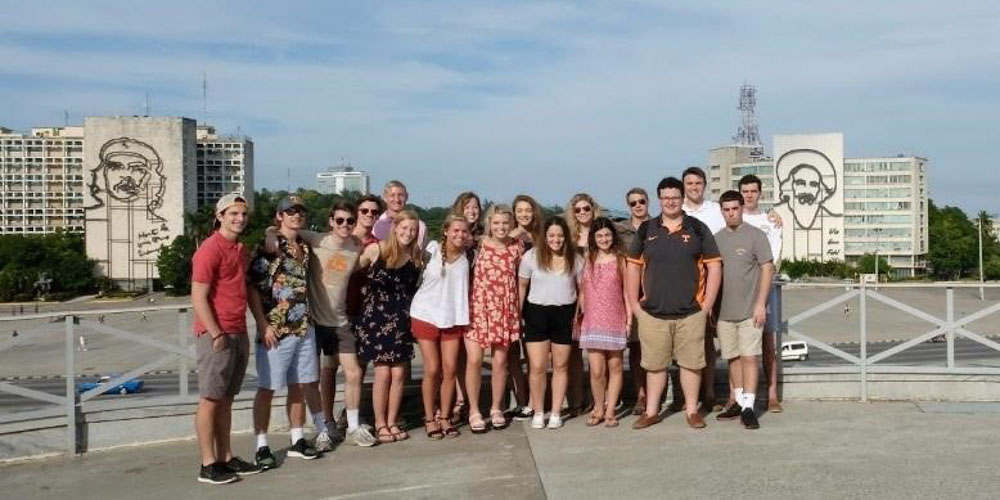Written by Emily Myers
Over winter break, I traveled to Cuba with a group of first-year students and two professors from the Haslam College of Business. The trip was a fantastic learning experience and an opportunity to see a country with unique temporal attributes. Our group spent the majority of our time in Havana, where we interacted with business owners and managers, explored the history of Cuba, and ate all the Cuban cuisine we could stomach. We also ventured outside the capital to the beachside resort town of Varadero and the farm-strewn countryside in Viñales. Before my visit to Cuba, I was nervous to visit a country with a traditionally adversarial relationship with the U.S. and a travel warning from the U.S. State Department. Upon arrival, I realized quickly that there was nothing to fear and that I had much to learn from the people and culture of Cuba.

Decades of control by the Communist Party and restricted trade from an embargo have left a visible and striking impact on Cuba. After years without care, massive mansions are crumbling and faded. They give glimpses to what Havana was like pre-revolution and are now mere shadows of their former glory. In striking contrast, government buildings and monuments are pristine and well maintained. Everything in Havana seemed like a throwback to the sixties, especially when you looked to the streets. Though modern taxis and buses scattered the streets, the locals drove cars that look as they would have half a century ago.

Our group had the opportunity to visit a mechanic’s shop to get a closer look into these antique cars. We learned that though many of the cars once held a single nationality, they are now an assortment of parts from all over the world. The resourcefulness and creativity of the Cuban mechanics to keep antique cars driving amazed me and reminded me of the resilience of the people residing in Cuba. Antique cars have evolved to be more than just transportation; to many Cubans, a car is a part of the family, a source of pride and accomplishment, and a livelihood. The antique cars are woven into the culture and have become an emblem for Cuba. In many ways, the antique cars resemble much of what I learned about the strength of the people of Cuba, they have been beaten down, have gone through rough patches throughout the years, yet still, find a way to keep running.

Before arriving in Cuba, I assumed Cubans would hold a grudge against Americans as a result of the tension between our governments. This was not the case. The people we encountered in Cuba were some of the most generous and kind-hearted people I have ever met. We were welcomed into homes, treated like friends, and offered coffee at every turn. Everyone we met was surprised and extremely excited to see Americans in Cuba. Many went out of their way to speak with our group and tell us about their lives. They were happy to share their culture and customs with us, and they did not hold the same grudge the U.S. and Cuban governments hold for each other.
By the time I departed Cuba, I had experienced a completely different culture and learned so much from it. Though most of the Cubans we met had few material possessions, they were happy with their lives and made the most of every moment. I also learned that freedom means different things to different people. For most of modern history, foreign powers and business have controlled or influenced Cuba and its governance and culture. Today, Cuba is mostly isolated and most Cubans are not allowed many things Americans would consider basic rights or necessities. Yet, the Cubans we met seemed to support their government, seemed content with their lives, and considered themselves free.
I feel so lucky to have had the chance to visit and experience Cuba. My trip to was truly a unique experience, and I am happy the 1794 Scholars Program supports students in finding ways to participate in other cultures.
